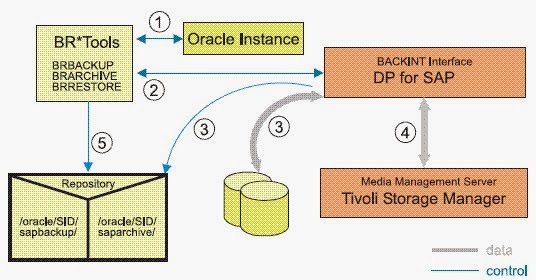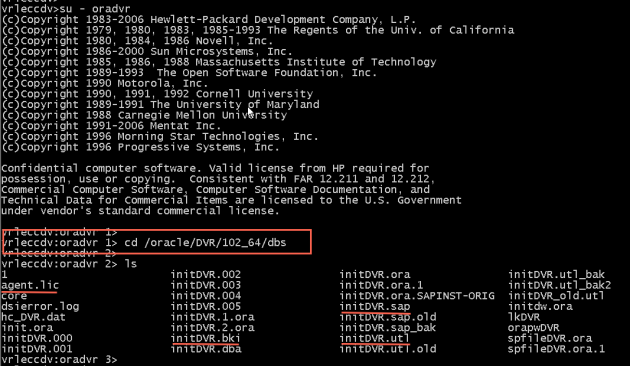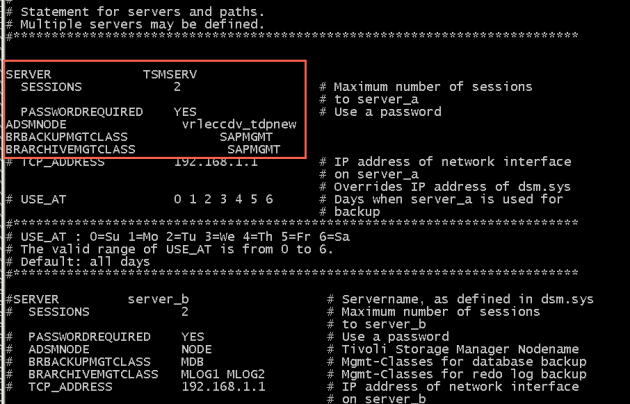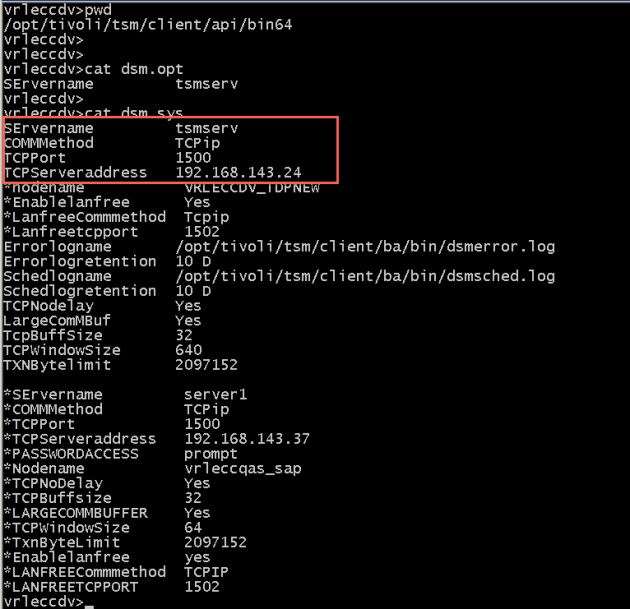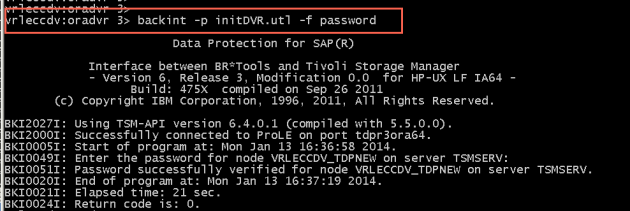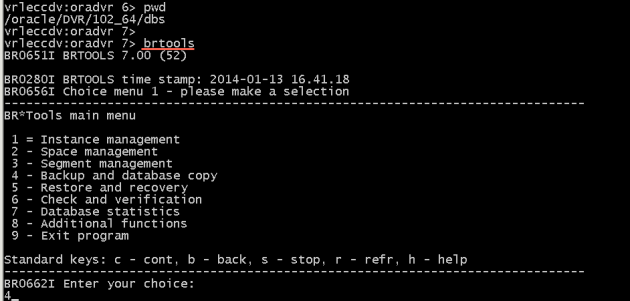q sess To see currently working sessions
can sess ( sess no) To cancel a session
q eve domainname schedulename To see schedule time,nodename, scgedule name and progress of the scheeduled backup. ( q eve * * to see all scheduled backups)
q proc To see currently running background processes
cancel process (process no) To cancel a process
q node To view assigned nodes in a Tivoli server
q filespace To check backup space utilized for each file system of a server, filesystem type…
q actlog To view activity log
q act begind=mm/dd/yyyy begint=hh:mm:ss endd= mm/dd/yyyy endt=hh:mm:ss To view activity log for a specified period by begining date and end date
q act begind=today-1 begint=00:00 To view activity log from yesterday 12:00 am
q act search=transferred begint=00:00 To see all completed backup size of servers from 12:00 am
q act search=nodename To view activity log for a node
q drive f=d To get detailed report of drive, it’s status …
q library f=d To get detailed information about tape library
q libvol To see volumes in the tape library and it’s status
q vol To see volumes and it’s storage pool name, capacity, status
q req To see requests
reply (request no) To continue request
q sched To show schedule name domain, action , start date & time
q sched f=d To show detailed report about schedules including schedule backup path
UPDATE LIBVOLUME TS3200 L41117L4 STATUS=SCRATCH To change a library volume ( L41117L4 ) status to scratch from private
update node nodename “admin” domain=domainname forcepwreset=Yes To change a tivoli login password of a node
define vol storagepoolname L41116L4 Add new tape L41116L4 to a storagepool
delete volume L41116L4 discarddata=yes To delete data inside a tape media L41116L4
To create a new schedule backup (incremental ) for a node
UPDATE SCHEDULE domainname nodename desc=”daily incremental backup for a server” action=Incremental options=-subdir=yes objects=””/fs1/*” “/fs2/*” “/home/user1/*”” priority=5startdate=mm/dd/yyyy starttime=hh:mm duration=1 duru=Houperiod=1 perunits=Day dayofweek=Any expiration=never
To start tivoli services in an AIX client
#cd /usr/tivoli/tsm/client/ba/bin
nohup dsmc sched & To start scheduled backup service
nohup dsmcad & To start BA client ( webmode backup i.e. http://ip.address.of.server>:1581)
#cd /usr/tivoli/tsm/StorageAgent/bin
nohup ./dsmsta & To start storage agent ( LANFREE BACKUP= backup directly from SAN to Tape library )
#ps -ef | grep dsm To view currently running Tivoli services in server
To update drive status of a server to online
update path sourceservername TAPE0 srct=server destt=drive libr=ts3200 online=yes
To set serial number of a drive in tape library
UPDATE DRIVE TS3200 TAPE0 ELEMENT=autodetect ONLINE=Yes WWN=”2002000E11107B6C” SERIAL=autodetect
To detect label of a tape in tape library
label libvol t3200 checkin=scratch labelsource=barcode search=bulk waittime=0
To remove tape media from tape library
checkout libvol ts3200 VOLLIST=A00015L3,A00019L3 CHECKLABEL=YES REMOVE=YES
To add and label new tapes into library
LABEL libvol TS3200 search=yes labelsource=barcode overwrite=NO checkin=SCRATCH WAITTIME=0
To take full backup of Tivoli database manually to a file in local disk
backup db dev=FILECLASS type=full
to assign a tape drive to a server
=======================
UPDATE PATH servername TAPE0 SRCTYPE=SERVER DESTTYPE=DRIVE LIBRARY=TS3200 DEVICE=\\.\Tape0 ONLINE=YES AUTODETECT=no
Important
If you are not able to take backup through any of Tivoli backup methods ( BA client, dsmc , schedule ) then check any NFS mounted filesystems are there in the server and that server is available or not. If that server is not powered on, either unmount the NFS filesyatem or make that server available…




